
Plant of the Month - March, 2023
GENERAL INFORMATION:
We eagerly look for signs of spring in early March. A few flowers are in bloom or are showing colour. Many species Crocus, or Snow Crocus, and their cultivars, are starting to emerge, even through the snow. Some are coloured lilac or purple, adding to the whites and yellows of the earliest spring bulbs and corms.
Crocus tommasinianus is one of the first of these. I planted the species many years ago and they have spread around the garden. C. t. ‘Whitewell Purple’ made a lovely purple accent among these and other bulbs. C. t. ‘Ruby Giant’ was added later. These have crossed. I now have a mixed population with a few of the original cultivars.
Common Name: Snow Crocus, Early Crocus, Lilac Tommy, Botanical Crocus
Environmental Benefits: Food early in the season for pollinators.
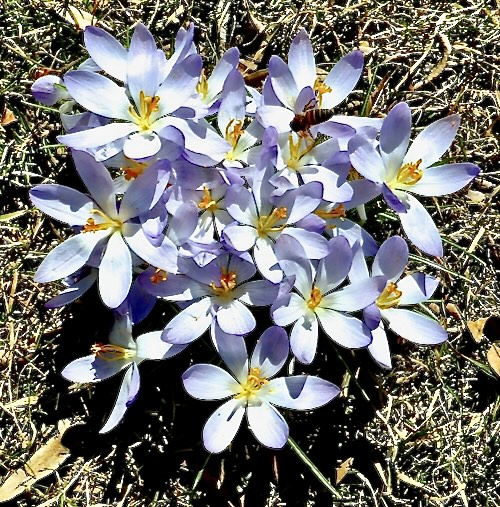
Crocus tommasinianus with Honey Bee.
Cultivars:
Crocus tommasinianus ‘Albus’ - pure white with orange anthers and stigmas.
‘Barr’s Purple’ dark purple with a silvery sheen on the outside of the tepals.
‘Lilac Beauty’ pale lilac, more white in centre, pale outside.
‘Roseus’ has 2-tone pinkish flowers.
‘Ruby Giant’ larger, deeper purple.
‘Whitewell Purple’ Slender purple tepals, silvery inside.
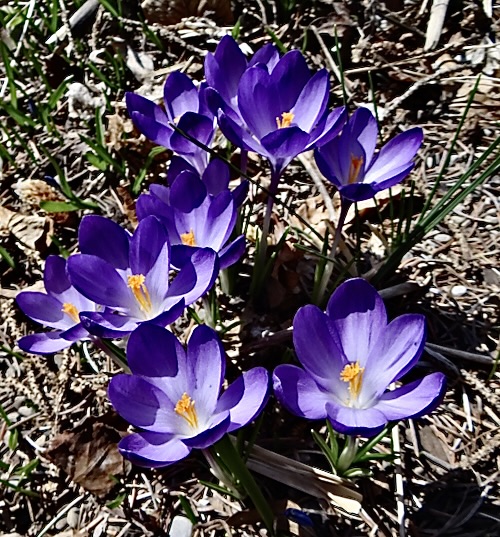
Crocus tommasinianus ‘Whitewell Purple’
N.B. Caution - not all corms for sale are as advertised.
Life Cycle: Perennial corm, summer dormant.
Height: to 12 cm high, clumps spreading to 15 cm wide.
Bloom Time: end of March - April in Toronto.
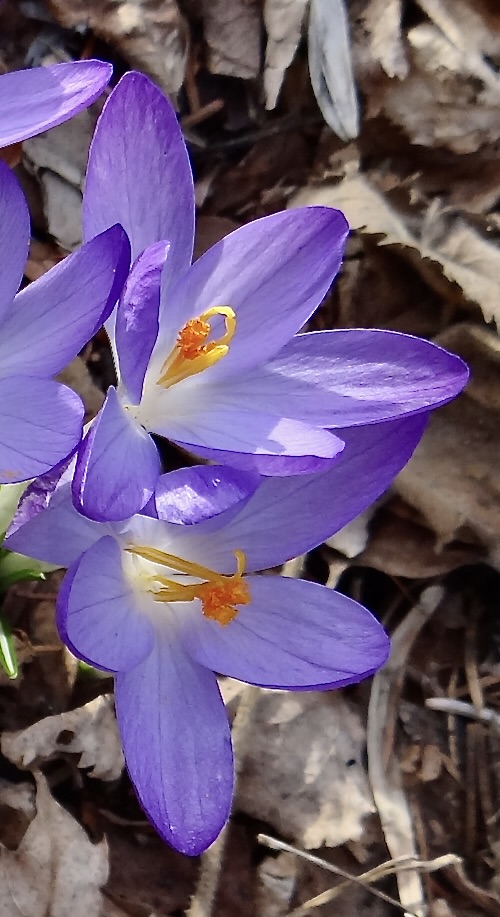
Crocus tommasinianus - Flower structure.
Flower Colour & Size: Several flowers grow from each corm.These are long white tubed inflorescences with 6 spatulate tepals, about 3 cm in length. They form a goblet to starry shape in shades of lavender with a central white throat The anthers are orange or yellow and stigmas orange. Flowers close at night and on dull days.
Leaves: 3-5 linear leaves, faintly silver striped, short lasting, appearing with the flowers.
Range: Southern Hungary and Balkans.
Habitat: Hillsides and woods.
CULTIVATION:
Plant: Place where the flowers can easily be seen from the house. Plant corms in drifts in the fall, 8-10 cm deep, 8-10 cm apart. Firm soil to deter rodents.
Naturalize: In groups in lawns. Mow when leaves die down, about 6 weeks after flowering. Self-seeds and is also spread by rodents.
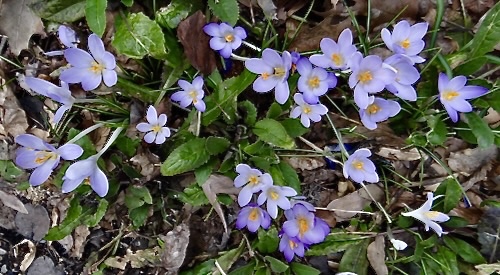
Crocus tommasinianus - self seeding forms.
Light: Deciduous shade to full sun.
Soil: Average, well drained soil. Avoid planting in clay soils.
Water: Medium moisture.
USDA Hardiness: Zones 3 - 8
Companion planting: Grass, other spring bulbs, spring blooming small shrubs.
Propagation: Divide clumps after leaves die down or in fall and replant. From seed: best sown outside in the fall. Seeds need fluctuating temperatures, with freezing for about 3 months. Leave in a pot for 2 years.
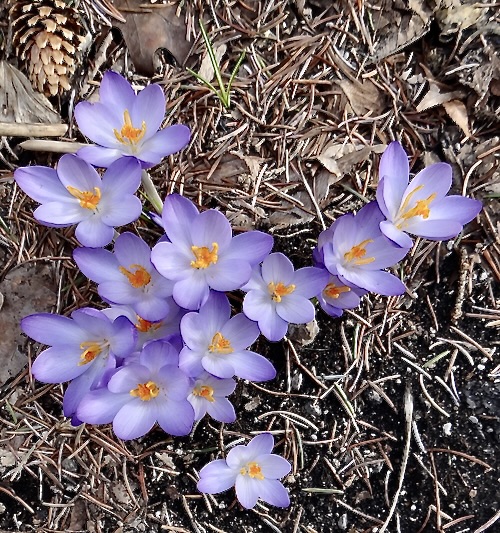
Crocus tommasinianus - Divided clump.
Problems: Rodents may dig up corms but seem to prefer other crocus. Deer and Black Walnut resistant.
References:
https://www.missouribotanicalgarden.org/PlantFinder
https://onrockgarden.com/index.php/germination-guide
Text and images supplied by Anna Leggatt (Toronto Master Gardener)
